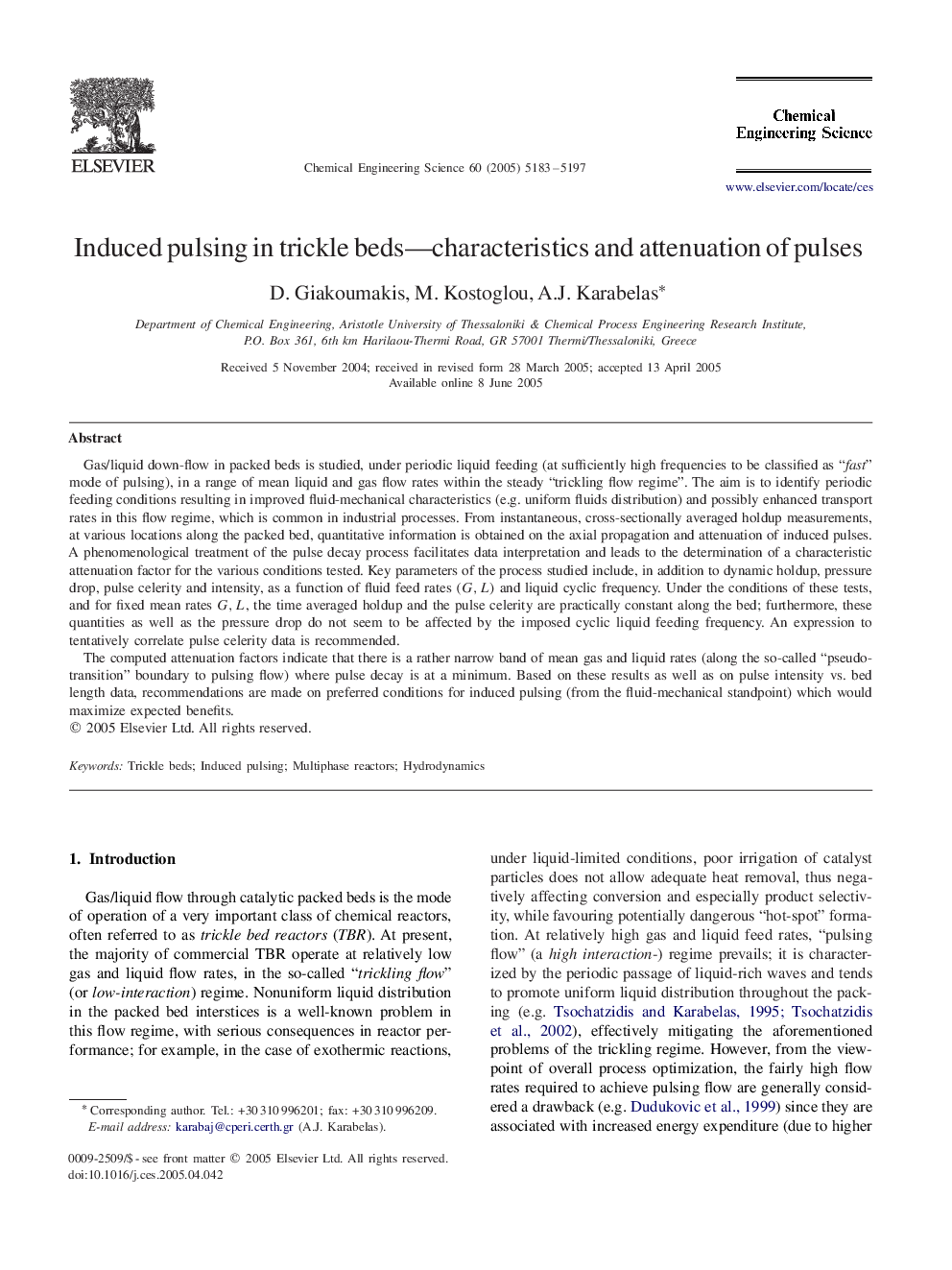| Article ID | Journal | Published Year | Pages | File Type |
|---|---|---|---|---|
| 159286 | Chemical Engineering Science | 2005 | 15 Pages |
Gas/liquid down-flow in packed beds is studied, under periodic liquid feeding (at sufficiently high frequencies to be classified as “fast ” mode of pulsing), in a range of mean liquid and gas flow rates within the steady “trickling flow regime”. The aim is to identify periodic feeding conditions resulting in improved fluid-mechanical characteristics (e.g. uniform fluids distribution) and possibly enhanced transport rates in this flow regime, which is common in industrial processes. From instantaneous, cross-sectionally averaged holdup measurements, at various locations along the packed bed, quantitative information is obtained on the axial propagation and attenuation of induced pulses. A phenomenological treatment of the pulse decay process facilitates data interpretation and leads to the determination of a characteristic attenuation factor for the various conditions tested. Key parameters of the process studied include, in addition to dynamic holdup, pressure drop, pulse celerity and intensity, as a function of fluid feed rates (G,L)(G,L) and liquid cyclic frequency. Under the conditions of these tests, and for fixed mean rates G,LG,L, the time averaged holdup and the pulse celerity are practically constant along the bed; furthermore, these quantities as well as the pressure drop do not seem to be affected by the imposed cyclic liquid feeding frequency. An expression to tentatively correlate pulse celerity data is recommended.The computed attenuation factors indicate that there is a rather narrow band of mean gas and liquid rates (along the so-called “pseudo-transition” boundary to pulsing flow) where pulse decay is at a minimum. Based on these results as well as on pulse intensity vs. bed length data, recommendations are made on preferred conditions for induced pulsing (from the fluid-mechanical standpoint) which would maximize expected benefits.
